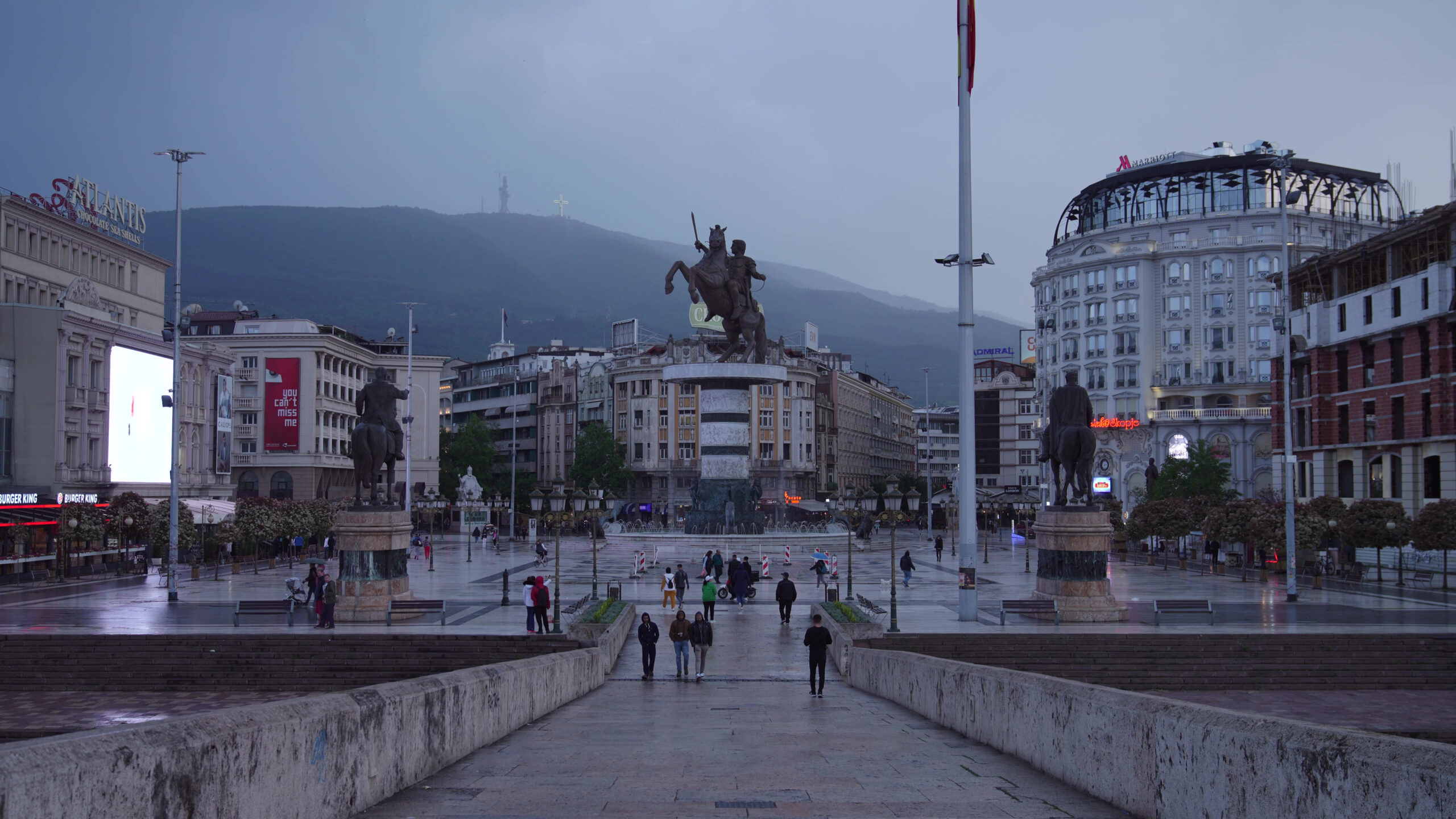STSM Contribution by Antonio Paoletti

The project began in December 2022 when Jorge Mejía Hernández contacted me, interested in exploring a means of disseminating research capable of reaching an audience beyond the academic community. He proposed focusing on one of the 11 cities the research group investigated in the previous years to capture a city’s narrative into a movie. For this purpose, we identified the city of Skopje in Macedonia. Recognizing the limitations of traditional documentary approaches that rely heavily on talking head experts, we made a conscious decision to involve people from local communities as characters in our movie. Our intention was to move beyond mere factual analysis and provide a more immersive and emotional experience.
After clarifying similar objectives, our project entered a crucial phase towards the end of March. While our goals were well-defined, the specific content of the movie still remained uncertain. To address this challenge, we formed a core team by involving the expertise of two local architects and researchers, Blagoja Bajkovski and Ana Rafailovska, and social psychologist Matteo Paoletti. Together, we embarked on a collaborative research phase, nurturing a sense of teamwork and shared purpose. During this phase, we delved into the city’s history, with a keen interest in exploring the Skopje 2014 project. What intrigued us was the deliberate departure from the city’s previous identity rooted in Brutalist style and the introduction of neoclassical elements evoking Hellenic heritage. It became apparent that these architectural endeavors were driven by more than a desire for visual representation; they served as a platform for shaping the city’s historical and cultural identity. However, the controversies surrounding these interventions sparked compelling debates, shedding light on the intricate connections in Skopje between political agendas, memory and urban development.
At the same time, we conducted research on the social and economic fabric of the city, which led us to discover a significant presence of informal businesses in the Macedonian economy. This inspired us to delve into the local street markets, vibrant spaces where these businesses thrive and utilize public areas for daily activities, work, and social interactions. Through this exploration, we recognized the inherent tension between top-down architectural proposals, driven by historical and cultural narratives, and the practical needs and lived experiences of the city’s residents.
The story began to take shape, as it became clear to us that there was an inherent oddity in the juxtaposition between daily life, economic struggles, and social cohesion of the city’s residents and the monumental yet seemingly lifeless buildings of Skopje 2014. However, we wanted to convey this narrative not through mere exposition, but through emotions. To achieve this, we decided to invite street vendors or craftsmen from Skopje to read Hellenic and Roman ancient poems describing classical architectures while showcasing their daily lives. This deliberate contrast aimed to highlight the disparity between the idealized vision portrayed by the neoclassical structures and the reality of the people’s lives. The oddity of hearing these individuals recite poetry, while witnessing how distant that idealization is from their own existence, became the foundation of our script.

Assisted by Ana Rafailovska, Blagoja Bajkovski, and architecture student Mila Gavrilovska, we established a rapport with street vendors, presenting ourselves as a research and intervention entity dedicated to exploring the public’s experience of recent interventions within the city’s squares along the Vardar River. Our focus during this process was to clarify our intentions and establishing honest exchanges with participants, rather than approaching them solely as a means to gather information and captivating visuals. We successfully contacted four individuals who expressed their enthusiasm to participate, ultimately becoming the central characters of our film: Sonja, a street book seller, Ignjatjie, a street artist, Ibrahim, a blacksmith in the old bazaar, and Ilija, a hat maker and tailor. Sonja was engaged prior to the beginning of our fieldwork, which took place from May 7th to May 14th, while the other participants were discovered through serendipitous encounters.

However, we encountered certain challenges throughout the fieldwork process. Some participants whom we excluded from the project requested compensation in exchange for their collaboration, which posed a risk to the integrity of the interviews as they may have felt inclined to say what they thought we wanted to hear. Additionally, despite the keen interest expressed by some informal vendors in participating, they preferred not to have their faces shown. Since our movie aimed to establish a human connection with the characters, we chose not to include them in the filming process.
Parallel to the interviews, we captured footage showcasing how spaces along the river, adorned with imposing classic architectures and monuments, predominantly serve as thoroughfares rather than fostering social interactions or a sense of belonging. Here, many tourists engage with statues in public spaces solely for the purpose of taking selfies, an observation that found its way into the movie as well. These places coexist in stark contrast with the vibrant markets and the bustling old bazaar, where public spaces become integral realms for both livelihoods and communal engagement.